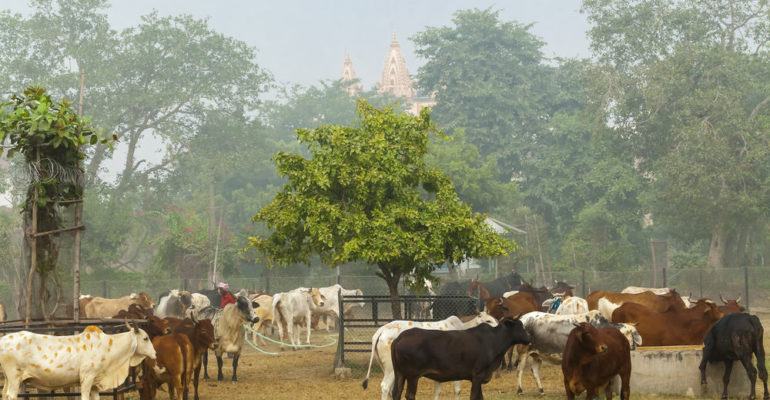The protection and veneration of cows by Hindus is a well-established fact in India and all over the world where Hindus live. Thee causative force easily comprehended by people all over the universe lies in the cow’s nature of selfless beneficence and non – violence. The reverence of this informative domestic beast by Hindus is not confined to its preservation of merely its products. Instead, it goes along with various practices found peculiar by non – Hindus, which also includes abstinence from its killing for dietary or production purposes, and its worship as a universal mother and as Kamdhenu, a divine cow considered to offer all wishes.
Although the most widely presumed reason for the traditional uplift of this animal is the indigenous and natural respect among Hindus for all life on the universe and their religiously invoked vegetarianism, this is not completely true. An ancient Hindu scripture which includes the laws of man explains in a decant manner. There is nothing wrong in eating mean but abstaining is profusely rewarding and also, the Rigveda has explained and pointed cows as “un – slayable”. Also, even while bulls, oxen and horses were sacrificed to god, and their meat eaten, cow slaughtering was prohibited strictly. Even as of today, a majority of non – veg eaters abstains from eating beef, or any products of cow – slaughter in general.
Reasons For Qualifying
The best qualifying reasons, therefore, for the reverence of cows in Hinduism, are its usefulness, incredible nutritional and medicinal value of the products and representation of absolute productivity and maternal selflessness. Hindus have permanently utilized every item that a cow produces with its intake of grain, mere grass, water, milk, dung and urine along with its derivatives, not just in their regular lives for food, medicine, disinfection and fuel, which are all scientifically proven applications, but also in festivals and religious rites.
A Symbol Of Hinduism And India
As per many art forms, Kamadhenu is usually depicted in her full cow with pictures of deities on different parts of her body. For instance, Brahma is depicted on the hump, while the legs represent the vedas, and the Himalayas. Her shoulders the wind god vayu and the fire god agni.
The Ocean Of Milk
Kamadhenu is considered to be born from the Ocean of Milk which was then presented to the great 7 sages by the god themselves. Also, Kamadhenu was possessed by Sage Vasishta.
Faqs
- Is there any Goshala Development program in India?
Yes, you can contact WRC (WOMEN’S RENAISSANCE CENTRE) to know more about Goshala Development program in India.
- What are these Gaushala aims for?
They aim to free cattle from hunger and thirst. They also provide comfortable environment and other freedom from distress.
- How many gaushalas are there in India?
There are over 5000 gaushalas in India which includes more than six lakh cows maintained for an large amount of annual maintaining cost.
- What does this project that is offered by WRC aims for?
They aim to provide housing facilities, machinery equipment, managing gaushalas and rescue protocols are some of the aims of WRC goshala detailed project.
- Is the project carried out within the country?
The project is carried out all over Tamilnadu.

